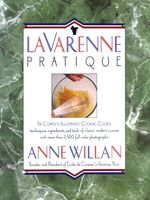Advertisement
Preventing Food Spoilage
Appears in
By Anne Willan
Published 1989
To preserve food, by whatever means, is to arrest the development of decay. Unless food is consumed when fresh or preserved, bacteria, molds and yeasts will grow and feed on it, making it rot. Bacteria spread rapidly in warm, moist conditions and cause food poisoning that can sometimes be fatal. Salmonella is the best known of the harmful bacteria, especially prone to develop in meat that has been standing in a warm place, or which has not been thoroughly cooked. Mold is easy to spot, and is usually blueish-green or white. Some types of mold, such as that in blue cheese, are benign; others taste extremely bitter and can be harmful. Yeast causes fermentation and grows on the skins of fruit. In wine and bread, fermentation is cultivated deliberately, but most fermented foods develop a sharp, unpleasant taste. Tiny bubbles also betray fermentation.

